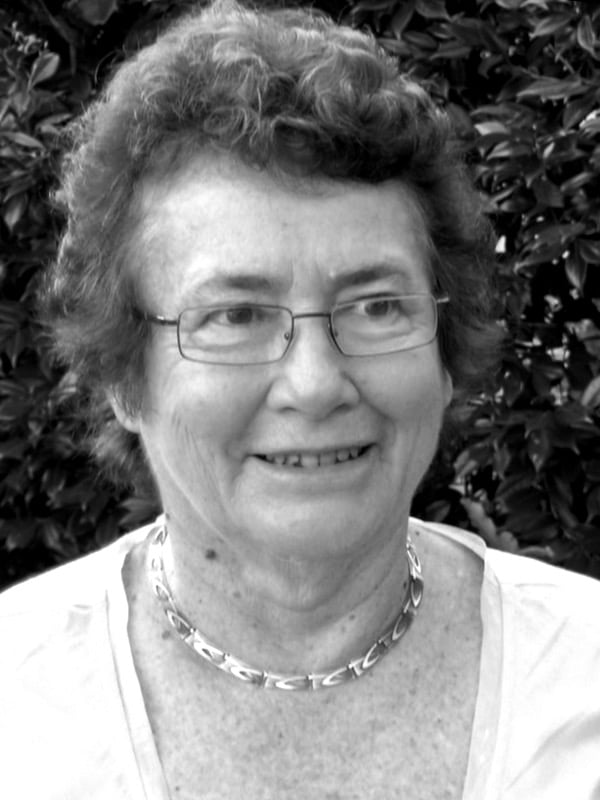Yvonne Cossart

Yvonne Edna Cossart (1934-2014) was an Australian virologist
Cossart was Bosch Professor of Infectious Diseases and Immunology at the University of Sydney.
In 1975, whilst in London, Cossart and her colleagues recognised a previously unknown parvovirus in blood donations and transfusion recipients. Parvovirus ‘B19’ is now known to be the cause of fifth disease in children and can also cause aplastic anaemia, hydrops fetalis and acute arthritis.
Cossart’s main work was in hepatitis. She was involved in providing a diagnostic and clinical advisory service for England and Wales; designing control measures to contain hepatitis B in renal dialysis units in the UK; and trials of hepatitis B immunoglobulin as post-exposure prophylaxis for needle-stick injury.
Biography
- Born on August 14, 1934 in Chatswood, New South Wales, Australia
- 1957 – BSc (Med) Hons, University of Sydney; undertook classical virology research in the University of Sydney’s Department of Bacteriology headed by Professor Patrick De Burgh
- 1959 – MB BS Hons, University of Sydney
- 1960-1962 Registrar in pathology, Royal Prince Alfred Hospital; established a virus diagnostic laboratory within the Department of Microbiology
- 1967 – Consultant virologist; Chairman of the Public Health Laboratory Service Working Party on Hepatitis
- 1973-1976 Convenor and Chairman of the Society for General Microbiology Workshops on Hepatitis
- 1977 – Senior Lecturer in the Department of Bacteriology at the University of Sydney; with the arrival of hepatitis B vaccines and she was involved in studies of the immunisation of health care workers and the implementation of prophylaxis for babies of hepatitis B carrier mothers
- 1979-1985 Associate professor, Department of Infectious Diseases, University of Sydney
- 1986-2006 Bosch Professor of Infectious Diseases and Immunology at the University of Sydney.
- 1998 – Officer of the Order of Australia for “service to medicine as a specialist in infectious diseases, especially in the areas of virological research, epidemiology and disease prevention, and to education”
- Died on December 16, 2014 in Greenwich, New South Wales, Australia
Medical Eponyms
Parvovirus B19
Yvonne Cossart working at the Virus Reference Laboratory, Colindale, and South London Blood Transfusion Centre described parvovirus-like particles in the serum of blood donors during screening for hepatitis B virus. The serum sample, which contained parvovirus-like particles, was coded as panel B and number 19 and hence named “parvovirus B19”.
In 1975, for QA of hepatitis B testing in the BTS we included an example of a group of donor sera from South London (Barbara Cant and Dianne Widdows) which gave anomalous results at the Virus Reference Lab. It was sample 19 in panel B
To be positive in this gel diffusion test the antigen concentration had to be high, so we compared the appearance with HBV in the electron microscope
Cossart 2013

A parvovirus-like antigen has been found in sera of nine healthy blood-donors and two patients. Its pathogenicity is unknown, but 30% of adults possess specific antibody. The new agent can be confused with hepatitis-B antigen both morphologically and serologically.
Cossart 1975
On testing the sera of all the lab staff, 40% were positive so B19. Cossart concluded this was a common human infection with no known disease association – an ‘orphan parvovirus’. The virus samples were frozen and stored in 1977.
In 1979 a cluster of cases of aplastic anaemia was observed in children of an extended West Indian family with sickle cell disease in South London. Samples were sent to the Virus Reference Lab where they were tested against a selection of ‘orphan’ agents. B19 was the only one positive.
John Pattison et al noted the association between aplastic crisis and B19 infection. Subsequently specific IgM antibody tests were-developed, confirming these diagnoses, and further cases of aplastic crisis found to share the same aetiology.
1983 – Mary Anderson et al investigated an outbreak of erythema infectiosum in North London investigating cases for evidence of human parvovirus infection
Parvovirus-specific IgM was detected in all sera from the 31 cases in children and 2 adolescents. Those sera taken soon after the onset of the rash were strongly positive and the amount of specific IgM diminished as the length of time between the rash and the serum specimen increased. On the basis of these preliminary results we propose that the human parvovirus is the hitherto elusive agent of erythema infectiosum.
Anderson et al 1983
Major Publications
- Cossart YE. Thesis: Cellular aspects of virus infection and neoplasia, as seen in extromelia infection of the Ehrlich ascites tumor in vivo, and in vitro. 1957
- Cossart YE, Field AM, Cant B, Widdows D. Parvovirus-like particles in human sera. Lancet. 1975 Jan 11;1(7898):72-3.
- Cossart YE. Virus hepatitis and its control. 1977
- Cossart YE. History and Philosophy of Medicine for Medical Students. 1994
- Cossart YE. Human Parvovirus B19. 2013
References
Biography
- Mellor L. Cossart, Yvonne. Faculty of Medicine Online Museum and Archive, University of Sydney. 2008
- Bibliography. Cossart, Yvonne E. WorldCat Identities
Eponymous terms
- Pattison JR, Jones SE, Hodgson J, Davis LR, White JM, Stroud CE, Murtaza L. Parvovirus infections and hypoplastic crisis in sickle-cell anaemia. Lancet. 1981 Mar 21;1(8221):664-5.
- Anderson MJ, Jones SE, Fisher-Hoch SP, Lewis E, Hall SM, Bartlett CL, Cohen BJ, Mortimer PP, Pereira MS. Human parvovirus, the cause of erythema infectiosum (fifth disease)? Lancet. 1983 Jun 18;1(8338):1378.
- Pattison JR. B19 virus–a pathogenic human parvovirus. Blood Rev. 1987 Mar;1(1):58-64.
- Anderson MJ. Parvoviruses as agents of human disease. Prog Med Virol. 1987;34:55-69.
- Young NS, Brown KE. Parvovirus B19. N Engl J Med. 2004 Feb 5;350(6):586-97.
- de Jong EP, Walther FJ, Kroes AC, Oepkes D. Parvovirus B19 infection in pregnancy: new insights and management. Prenat Diagn. 2011 May;31(5):419-25.
- Servant-Delmas A, Morinet F. Update of the human parvovirus B19 biology. Transfus Clin Biol. 2016 Feb;23(1):5-12.
- Hill MA. Abnormal Development – Parvovirus. Embryology
Eponym
the person behind the name
